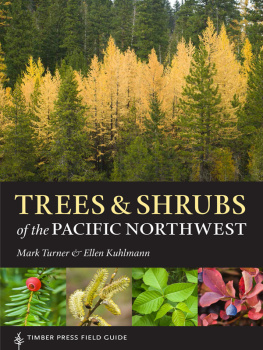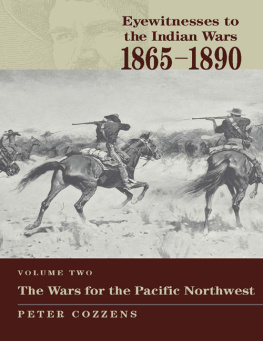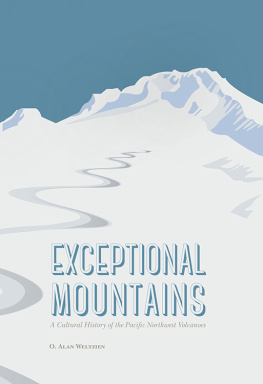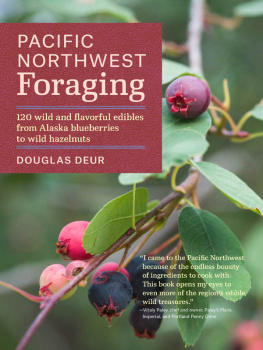Cover

| title | : | Indians, Fire, and the Land in the Pacific Northwest |
| author | : | Boyd, Robert |
| publisher | : | Oregon State University Press |
| isbn10 | asin | : | 0870714597 |
| print isbn13 | : | 9780870714597 |
| ebook isbn13 | : | 9780585379067 |
| language | : | English |
| subject | Indians of North America--Agriculture--Northwest, Pacific, Indians of North America--Northwest, Pacific--Social life and customs, Human ecology--Northwest, Pacific, Fire ecology--Northwest, Pacific, Prescribed burning--Northwest, Pacific, Northwest, Pacif |
| publication date | : | 1999 |
| lcc | : | E78.N77I53 1999eb |
| ddc | : | 577/.2 |
| subject | : | Indians of North America--Agriculture--Northwest, Pacific, Indians of North America--Northwest, Pacific--Social life and customs, Human ecology--Northwest, Pacific, Fire ecology--Northwest, Pacific, Prescribed burning--Northwest, Pacific, Northwest, Pacif |
Page i
Indians, Fire, and the Land
in the Pacific Northwest

Page ii
Page iii
Indians, Fire, and the Land
in the Pacific Northwest
Robert Boyd, Editor
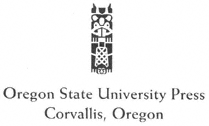
Page iv
Cover photo: Painting by Father Nicolas Point, c. 1840. Full credit on page 54.
The paper in this book meets the guidelines for permanence and durability of the Committee on Production Guidelines for Book Longevity of the Council on Library Resources and the minimum requirements of the American National Standard for Permanence of Paper for Printed Library Materials Z39.48-1984.
Library of Congress Cataloging-in-Publication Data
Indians, fire, and the land in the Pacific Northwest / Robert Boyd, editor
p. cm.
Includes bibliographical references (p. ) and index.
ISBN 0-87071-459-7 (alk. paper)
1. Indians of North AmericaAgricultureNorthwest, Pacific. 2. Indians of North AmericaNorthwest, PacificSocial life and customs. 3. Human ecologyNorthwest, Pacific. 4. Fire ecologyNorthwest, Pacific. 5. Prescribed burningNorthwest, Pacific. 6. Northwest, PacificSocial life and customs. I. Boyd, Robert, Ph.D.
| E78.N77I53 1999 |
| 577.2dc21 |
| 98-54743 |
| CIP |
1999 Robert Boyd
All rights reserved. First edition 1999
Printed in the United States of America
Oregon State University Press
101 Waldo Hall
Corvallis OR 97331-6407
541-737-3166 fax 541-737-3170
http://.osu.orst.edu/dept/press
Page v
Table of Contents
| Introduction |
Robert Boyd |
| Aboriginal Control of Huckleberry Yield in the Northwest |
David French |
| Indian Land Use and Environmental Change
Island County, Washington: A Case Study |
Richard White |
| Indian Fires in the Northern Rockies
Ethnohistory and Ecology |
Stephen Barrett and Stephen Arno |
| The Klikitat Trail of South-central Washington
A Reconstruction of Seasonally Used Resource Sites |
Helen H. Norton, Robert Boyd, and Eugene Hunn |
| Strategies of Indian Burning in the Willamette Valley |
Robert Boyd |
| An Ecological History of Old Prairie Areas in Southwestern Washington |
Estella B. Leopold and Robert Boyd |
| Yards, Corridors, and Mosaics
How to Burn a Boreal Forest |
Henry T. Lewis and Theresa A. Ferguson |
| Time to Burn
Traditional Use of Fire to Enhance Resource Production by Aboriginal Peoples in British Columbia |
Nancy J. Turner |
| Landscape and Environment
Ecological Change in the Intermontane Northwest |
William G. Robbins |
Page vi
238Aboriginal Burning for Vegetation Management in Northwest British ColumbiaLeslie Main Johnson255Burning for a Fine and Beautiful Open CountryNative Uses of Fire in Southwestern OregonJeff LaLande and Reg Pullen277Proto-historical and Historical Spokan Prescribed Burning and Stewardship of Resource AreasJohn Ross292ConclusionEcological Lessons from Northwest Native AmericansRobert Boyd298Contributors302Index
Page 1
Introduction
Basic Issues
I n May and June of 1792, George Vancouver's British-sponsored exploring expedition entered the uncharted waters of Puget Sound. Expecting a forested wilderness inhabited by unsophisticated natives, they were surprised at what they found. At Penn Cove, on Whidbey Island:
The surrounding country, for several miles in most points of view, presented a delightful prospect consisting chiefly of spacious meadows elegantly adorned with clumps of trees; among which the oak bore a very considerable proportion, in size from four to six feet in circumference. In these beautiful pastures the deer were seen playing about in great numbers. Nature had here provided the well-stocked park, and wanted only the assistance of art to constitute that desirable assemblage of surface, which is so much sought in other countries, and only to be acquired by an immoderate experience in manual labour.
Among the pine forests of Admiralty Inlet, Joseph Whidbey noted clear spots or lawns clothed with a rich carpet of Verdure. The verdure of these lawns included grass of an excellent quality, tall ferns in the sandy soils and several other plants: Gooseberrys, Currands, Raspberrys, & Strawberrys were to be found in many places. Onions were to be got almost everywhere. Whidbey was nostalgic: the lawns had a beauty of prospect equal to the most admired Parks of England.
Nearly two centuries later, in 1979, well after the lawns observed by Vancouver's party had been converted to agriculture, the pine forests partially cut and managed for timber production, many indigenous species supplanted by Eurasian varieties, and the villages and seasonal camps of the Native Americans replaced by the cities and farms of Euro-American newcomers, anthropologist Jay Miller
went into the Methow Valley [north-central Washington] with a van load of [Methow Indian] elders, some of whom had not been there for fifty years. When we had gone through about half the valley, a woman started to cry. I thought it was because she was homesick, but, after a time, she sobbed, When my people lived here, we took good care of all this land. We burned it over every fall to make it like a park. Now it is a jungle. Every Methow I talked to after that confirmed the regular program of burning.
Next page

